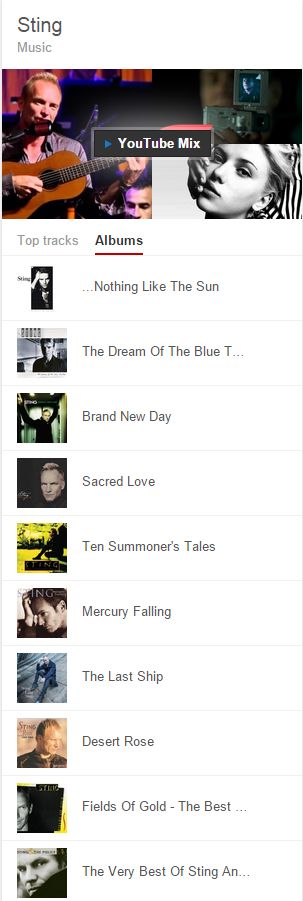 With the “freemium” model of ad-supported, semi-interactive listening under attack in some quarters, YouTube has formalized whole-album listening in its new YouTube Music section. YouTube Music is the freemium version of YouTube Music Key, which provides similar features in an ad-free environment, with downloading included.
With the “freemium” model of ad-supported, semi-interactive listening under attack in some quarters, YouTube has formalized whole-album listening in its new YouTube Music section. YouTube Music is the freemium version of YouTube Music Key, which provides similar features in an ad-free environment, with downloading included.
Albums have existed in YouTube for a long time, both supplied by rights-holders and uploaded by users. In some genres, the exposure of discography back catalogs is astounding, lovingly packaged by passionate users.
What has changed?
The Music Key venture puts an official stamp on whole-album listening, a highly interactive user experience that industry critics believe reduces the motivation to upgrade into a paid subscription. A recent Wall Street Journal column reports on unhappiness among record label executives about the freemium model generally, and the difficulty of up-selling users to premium plans. Taylor Swift and her label removed her music from Spotify’s semi-interactive free-listening tier, while leaving the catalog in subscription-only services like Rhapsody and Beats Music, as well as in non-interactive services like Pandora.
Across the industry, the advertising model is far more successful on the front end of the business than the subscription model. In Pandora, fewer than four-million users opt for the Pandora One plan, which eliminates advertising, among Pandora’s 76-million monthly listeners. In The Infinite Dial 2014, an annual consumer survey performed by Edison Research, 75% of respondents declared their acceptance of commercials in Internet radio listening — nearly as high as for FM listening.
As a result, ad-suppported listening has been the driving consumer adoption model for streaming audio. In traditional on-interactive listening like Pandora, the user cannot listen to songs or albums on demand. It is when ad-supported services like Spotify Free (which provides an artist’s entire discography in “shuffle mode,” and YouTube Music (which does have random access of the world’s largest music library) that the lines blur.
We tested YouTube Music and easily found albums for bands and artists covered by Music Key licensing. Listening to Sting’s Brand New Day, we encountered three commercials embedded as pre-rolls in the videos. Each was skippable, a common YouTube feature. But skipping required keeping eyes and hands on the screen. without skipping, three 30-second ads during a 10-track playlist would be a high spot load for streaming audio.
Naturally, we searched for Taylor Swift. There, as with other music not licensed directly for Music Key, the album/track list did not appear, and the result was a standard YouTube search result (which does contain many Taylor Swift hits and videos).
If YouTube Music takes off — which it easily might, given its seamless installation into the YouTube experience — the main impact might be to raise consumer expectation of a highly interactive feature in a free, ad-supported service.
